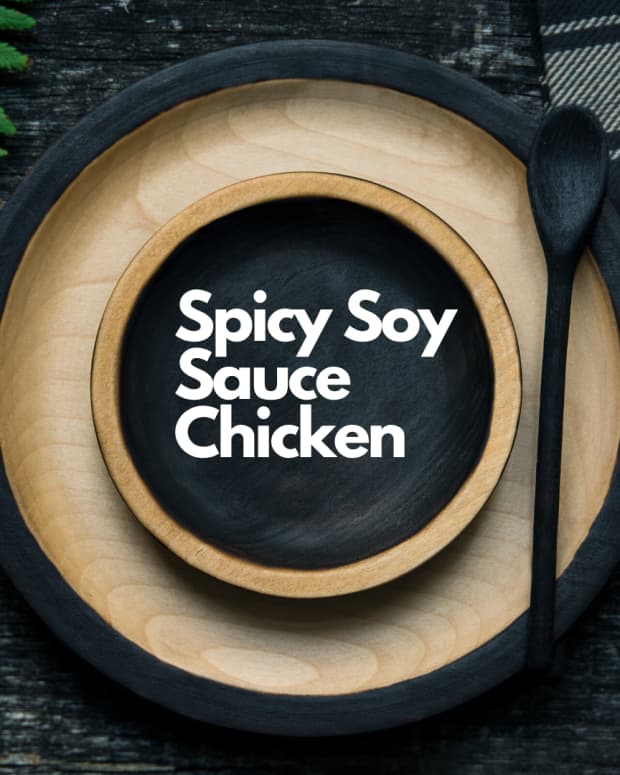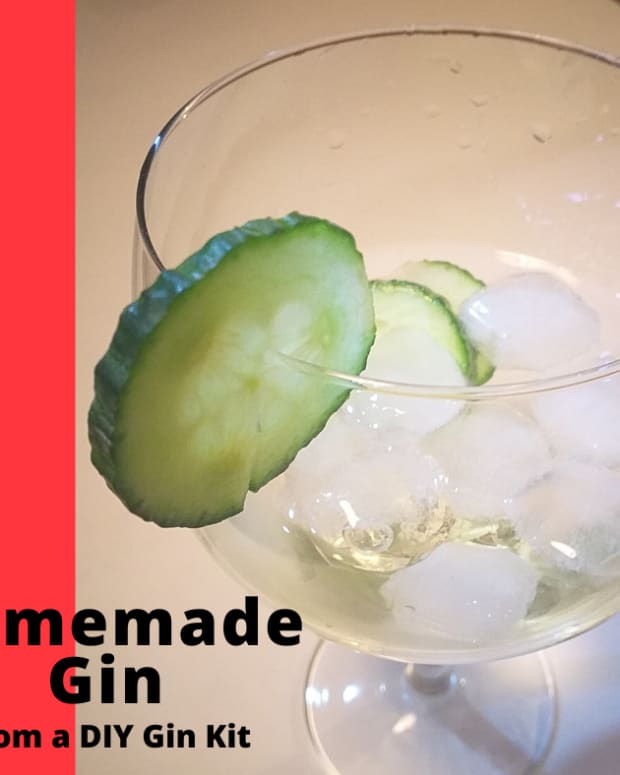Peculiar Foods and Unusual Food Names
I've spent half a century (yikes) writing for radio and print—mostly print. I hope to be still tapping the keys as I take my last breath.
Some foods such as developing duck embryo (balut), crickets fried in banana leaves, and Spam require courage and inebriation, probably both, before some of us might be enticed to eat them.
The World of Flatulence
- Pumpernickel is a dark rye bread originating in Germany. Let's turn to Random House for the etymology of the name: “The word was originally used in German as an insulting term for anyone considered disagreeable. Its elements are pumpern 'to break wind', and Nickel 'a goblin; devil; rascal', originally a nickname from Nicholas. Pumpernickel, in other words, literally means 'farting bastard.' ”
- Bubble and squeak is one of the more exotic of Britain's culinary gifts to the world; it's a fry-up of mashed potato and cabbage. The origin of its name is unclear but there are those who connect it to the tendency of cabbage to produce intestinal gas.
- Nun's farts, or pets-de-nonne in French from whence the dish originates, are small pieces of fried pastry balls sprinkled with sugar. In other places, they are known as “Spanish farts” or "whore's farts.” However, the language police have intervened and these delicacies are known among the more sensitive ranks of society as “nun's puffs.”
Bugs and Creepy Crawlies
- Wasp crackers: Known as jibachi senbei in Japan, they are made with rice flour, eggs, and a few other ingredients, including wasps. The wasps are a very high source of protein and they don't sting. But still. On assignment for Sora News 24, Steven Le Blanc reports that “Crackers filled with wasps aren’t that bad at all, but they aren’t very good either . . . when a wing or a leg got stuck between my cheek and gums it wasn’t the best feeling in the world.”
- Deep-fried tarantula spiders: If you're not ready for wasp crackers, how about deep-fried tarantula spiders? Cambodia is where you'll find them, and all adventurous foodies seem to end up at the Romdeng Restaurant in Phnom Penh. For about $6, diners get three or four of the critters, battered and deep-fried. Most diners refer to conquering the yuck factor by chomping on the legs first and then going in for the body. Flavour? Well, it doesn't taste like chicken. Here's the Australian Broadcasting Corporation's Zoe Osborne, “The abdomen is slightly bitter because all the organs remain inside but the eggs themselves are surprisingly tasty. The rest of the flesh tastes mainly of the spices it was fried in.”
- Mopane worms: These are not worms but caterpillars; however, that doesn't make them any more appealing to the eye. They are about four inches long, with bands of red, black, and cream, and spiky like most caterpillars. Found only in southern Africa, they eventually become Emperor moths, that's if they don't get eaten first. Problem Masau (from Culture Trip) tells us “Mopane worms can also be added to a stew, boiled to soften them up, or simply eaten raw and fresh off a tree.” According to a YouTube video, mopane worms do, in fact, taste like chicken.
More Ill-Named Treats
- Buttock tongue: Take the hind quarters of an ostrich, wildebeest, impala or whatever the big game hunter has snagged, cut it into strips, salt it, and dry it. In Afrikaans, what you've got it's called biltong, which translates to buttock tongue.
- Cathead biscuits: In the American South, cathead biscuits are popular; buttermilk, flour, and shortening are the ingredients. The unfortunate name comes from the finished product being about the size of a kitty's noggin.
- Sawmill gravy: Also from the American South, this is a concoction of bacon or sausage, cornmeal, and milk. The story is that cooks feeding lumberjacks in the Smoky Mountains ran out of flour so they substituted cornmeal, which produced a gravy that was a bit gritty. The lumberjacks said it was like eating sawdust.
- Southern fried rattlesnake: While we are in the South, how about Southern fried rattlesnake? The recipe requires that you first catch a rattler. However, they tend to get a bit ornery, so if you are not an expert snake wrangler stick with hot dogs or a peanut butter sandwich.
- Virgin boy eggs: For centuries, there has been a springtime tradition in Dongyang, China of eating specially prepared eggs. Someone has the delightful job of visiting the city's primary schools and collecting the urine of boys under the age of 10. Eggs are then boiled in the prepubescent pee to create “virgin boy eggs.” Do you want details on how this dish is made? Of course, you don't; so here they are courtesy of Reuters: “It takes nearly an entire day to make these unique eggs, starting off by soaking and then boiling raw eggs in a pot of urine. After that, the shells of the hard-boiled eggs are cracked and they continue to simmer in urine for hours.” The egg whites turn yellow—surprise, surprise—and the yokes are green. For the people of Dongyang, the tantalizing fragrance coming from cauldrons of boiling piss is a sure sign that summer is on its way.
From the Ocean
So far, seafood has escaped our attention. This is about to change with the introduction of the aptly named stink heads.
- Stink heads: Made from fermented fish heads, this dish emits a terrifying pong. The heads of whitefish or salmon are buried in a fermentation pit, but culinaryschools.org says the “process is less about fermentation and more about rot and decomposition.” You'll find this concoction in Alaska, where it is part of Indigenous culture, and by all means chow down on it if you can suppress the gag response and have a good health care plan. Culinary Schools advises that “Alaskan healthcare professionals [are] faced with frequent and, sometimes serious, totally avoidable botulism cases.”
- Wriggling octopus: South Koreans have a fondness for seafood. They like it fresh—very fresh, as in still alive on the plate. Take sannakji, which is also known as “wriggling octopus.” If you have the stomach for it, there are videos on the internet showing folks apparently enjoying swallowing live baby octopi. Some diners report suckers sticking on the way down; this occasionally causes death and not just for the octopus.
- Spoon worms: South Korea also gives us gaebul, otherwise called spoon worms. The beast has another name on account of its shape, and there's no way of sugar-coating this, it's often called the penis fish. It is usually eaten alive and this writer refuses to go further into the erotic trap that has been set.
So, what's for dinner tonight? Something commonplace methinks—macaroni and cheese. Ah yes, cheese: The curdled secretions from a modified sweat gland.
Bonus Factoids
- Entomophagy means the eating of insects, which generally pack much more protein content than beef or pork.
- Botanically, strawberries are not berries—but eggplants and bananas are.
- The kale craze began in about 2012 and peaked in about 2014. According to The Atlantic, sales of the crinkly, leafed vegetable had dropped to their 2011 level by 2019. Apparently, lots of people tried kale but never came back for a second helping. Entirely understandable.
Sources
- “Pumpernickel.” Words at Random, August 15, 1997.
- “Japanese Wasp-Filled Crackers.” Steven Le Blanc, Sora News 24, January 30, 2015.
- “Inside Cambodia’s Tarantula Snack Trade.” Zoe Osborne, Australian Broadcasting Corporation, July 26, 2019.
- “A Brief History of Mopane Worms, a Famous Delicacy from Zimbabwe.” Problem Masau, Culture Trip, May 21, 2018.
- “Cathead Biscuits.” deepsouthdish.com, June 17, 2018.
- “Quite Interesting.” BBC, December 13, 2013.
- “The 50 Weirdest Foods from Around the World.” hostelworld.com, February 11, 2021.
- “ 'Virgin Boy Eggs' Cooked in Urine Are Spring Delicacy in Dongyang, China.” Royston Chan, Reuters, May 29, 2012.
- “The 10 Most Disgusting Foods in the World.” culinaryschools.org, undated.
- “Sannakji Is a Live Octopus Dish that May Shock the Most Adventurous Eaters.” Joey Skladany, foodandwine.com, July 11, 2016
This content is accurate and true to the best of the author’s knowledge and is not meant to substitute for formal and individualized advice from a qualified professional.
© 2021 Rupert Taylor
Comments
Shauna L Bowling from Central Florida on August 13, 2021:
Eeeewwwww! All I can say is thank you for not showing a pic of fried tarantula. Me no like spiders!
Char Milbrett from Minnesota on August 12, 2021:
ugh. Amazing what people will eat... Around my neck of the woods, people consume breaded and fried rocky mountain oysters [yeah, from castrated pigs] and raw oysters with tabasco, and, oh, I cannot go on... but some of these foods sound greatly unappealing. Some, not so bad.
Rupert Taylor (author) from Waterloo, Ontario, Canada on August 10, 2021:
Thank you Rodric. Glad you enjoy the musings of an old man.
Rodric Anthony Johnson from Surprise, Arizona on August 10, 2021:
I love this article. You provide the most interesting reads. Thanks.




















